The Rise and Fall of Andrew Cuomo (Tenure Recap)
Recap Andrew Cuomo's 3 terms in office as New York State Governor. I explore the conditions he came into, how he rose to the moment, his administration's accomplishments, his administration's controversies, and New York State's overall dysfunction.
In 2010, the New York State Senate had 30 Republicans and 32 Democrats.
On a warm summer day, Senator Libous rose from his seat to introduce a surprise resolution to replace Senate Majority Leader Malcolm Smith [D] with a Republican. This created commotion in the Senate chamber as two Democrats had struck a deal with Republicans to vote for the resolution. Malcolm Smith moved to recess and cut off the lights and internet, but as much as he tried to stop the resolution it had passed. This came to be known as the “Senate coup.”
If that didn’t sound dysfunctional enough this was coming off the heels of Governor Eliot Spitzer [D] resigning due to paying “up to $80,000 for ladies of the night while he was attorney general, and later as governor” and then his successor Governor David Paterson [D] dropping out of his reelection campaign because he solicited an unlawful gift of free New York Yankees tickets and then “lied under oath” about it (at least it wasn’t New York Mets tickets).
With Governor Paterson out of the race, Andrew Cuomo [D] easily won the Gubernatorial election and assumed office on January 1st, 2011.
Governor Cuomo didn’t just step into a political whirlwind, but a fiscal housefire.
New York had the highest debt per capita. New York was ranked 50th in business climate and 50th in economic development because of its extremely high taxes (taxes 66% higher than the national average) and was considered by CATO, “the worst state on regulatory policy. ” New York was #1 in education spending, but 34th in results, #1 in Medicaid spending, but #21 in results.
At first, Andrew Cuomo rose to the moment. His experience as NY State Attorney General and as the son of a three-time governor plus his campaigning as a centrist Clintonesque “New Democrat” enabled him to hit the ground running to appeal to the Democratic-majority Assembly and Republican-controlled Senate.
He began his term by pointing out to audiences across the state the dire fiscal mess the state was in and the games politicians play to avoid addressing it,
When politicians talk about cutting the budget, a cut is defined as anything less than the anticipated growth. So anything less than the 13% increase is called a cut! All these years when you’ve been hearing they cut the state budget, you thought cut meant cut. Silly you! Why would you think cut means cut? Cut meant they didn’t have as large an increase as they thought they were going to have!
As part of his “charm offensive,” he invited legislators to the governor’s mansion for bagels and policy talks.
He established the Committee to Save New York, a lobbying group that spent millions of dollars on pro-Cuomo advertising and outreach.
He used the media to play tough with legislators. “A source close to the governor” would, for example, leak to the press that an ethics bill isn’t passing the Senate because Senator Nozzolio’s law firm doesn’t want to reveal its clients.
To strengthen the persuasive power of the bully pulpit, he’d use PowerPoint in his speeches.
Cuomo’s first State of the State address
Governor Cuomo effectively worked with labor unions who have more political power in NY than in any other state. Labor unions represent a larger percentage of workers in NY than anywhere else. Governor Cuomo pressured the unions to accept modest cuts or else he’d unleash Mayor Mike Bloomberg [R] on them. Mike Bloomberg had successfully got passed in the NY Senate a bill that would’ve allowed merit-based personnel decisions in city schools, which would’ve increased their quality, but Andrew Cuomo shot it down in exchange for reportedly getting the United Federation of Teachers to accept modest education cuts.
This graph makes me wonder how much of a “cut” it actually was though.
Cuomo also told hospital lobbyists and the healthcare workers union that he wanted to cut $2.9 billion in Medicaid and largely left it up to them to decide how to cut it.
Another key aspect of Cuomo’s leadership style is how he built close working relationships with legislative leaders. He’d frequently meet with the Speaker of the Assembly Sheldon Silver [D] and the Senate Majority Leader Dean Skelos [R] and Senate Deputy Majority Leader Tom Libous [R]. Compromises were made.
---
You can read the article version at www.AnthonyGalli.com.
-
 1:23
1:23
Sean Hannity
2 years agoAndrew Cuomo Resigns
8.75K225 -
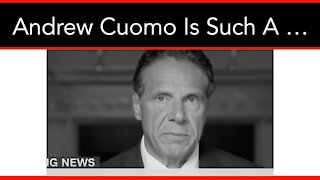 0:46
0:46
BPR Original Content
2 years agoAndrew Cuomo Is Such A …
6467 -
 1:57
1:57
Mr Producer Media
2 years agoGov Andrew Cuomo Resigns From Office
1.59K3 -
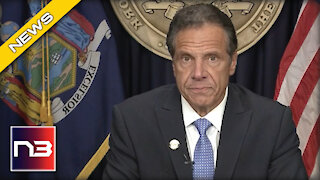 5:11
5:11
NextNewsNetwork
2 years agoAfter Being Chased From Office, Andrew Cuomo Gets $5.1 Million Bad News
61220 -
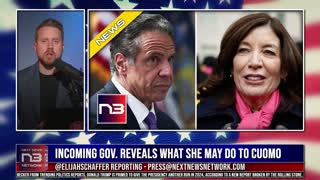 3:37
3:37
NextNewsNetwork
2 years agoAndrew Cuomo TERRIFIED after Incoming Gov. Reveals What She May Do Him
81912 -
 0:49
0:49
Mr Producer Media
3 years agoGov Cuomo: I Will NOT Resign!
1.35K6 -
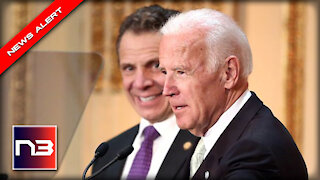 5:55
5:55
NextNewsNetwork
3 years agoUNREAL. After Countless Scandals, Biden Just Let Andrew Cuomo TAKE Over a CRITICAL WH Role
2756 -
 6:21
6:21
Fleccas Talks
3 years agoANDREW CUOMO MADE A HUGE MISTAKE
6.74K35 -
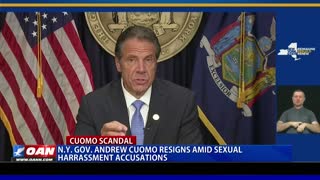 3:33
3:33
One America News Network
2 years agoN.Y. Gov. Andrew Cuomo resigns amid sexual harassment accusations
1.52K42 -
 1:01
1:01
spencerkarter85
6 months agoANDREW CUOMO IS IN BIG TROUBLE AGAIN!
94